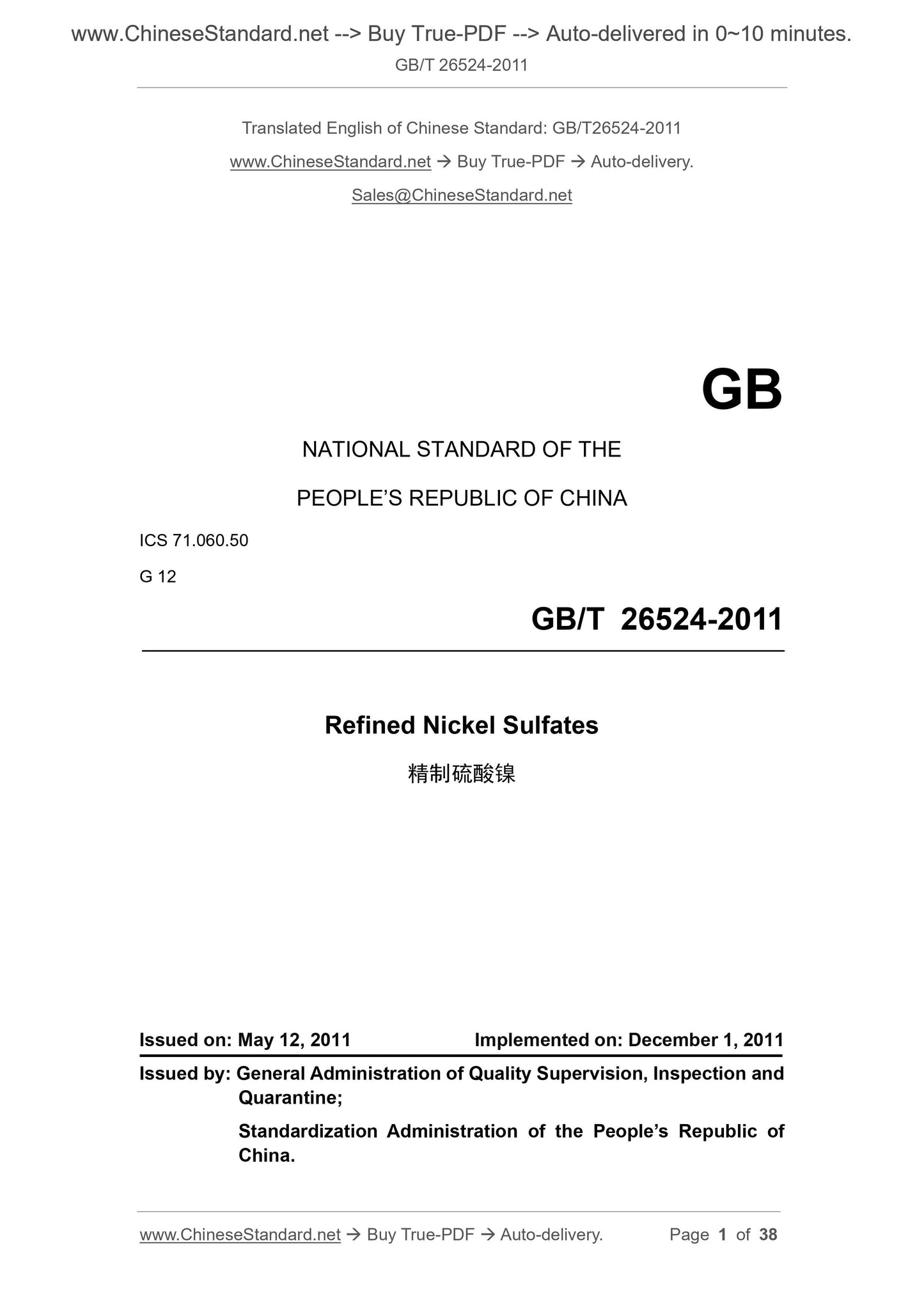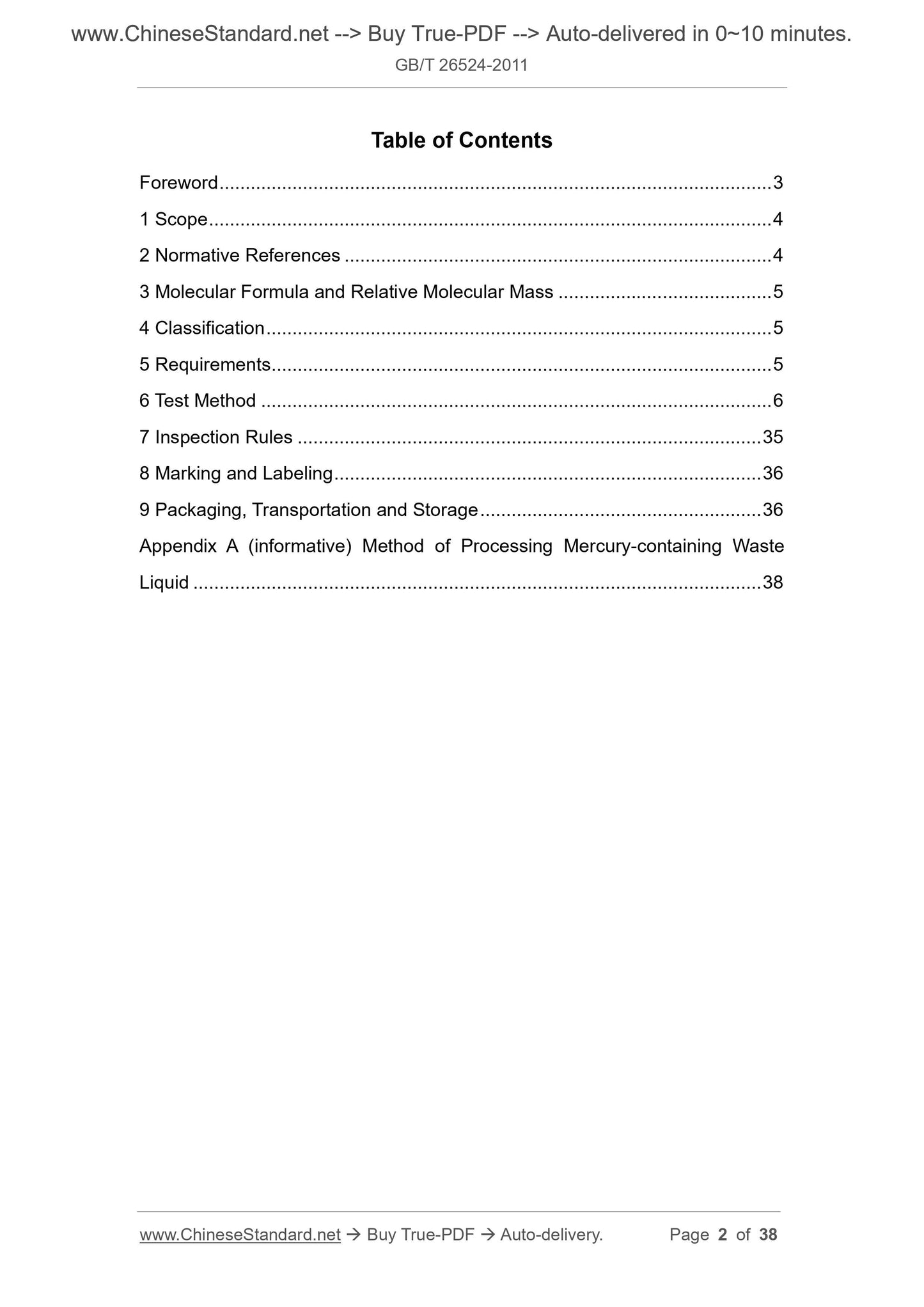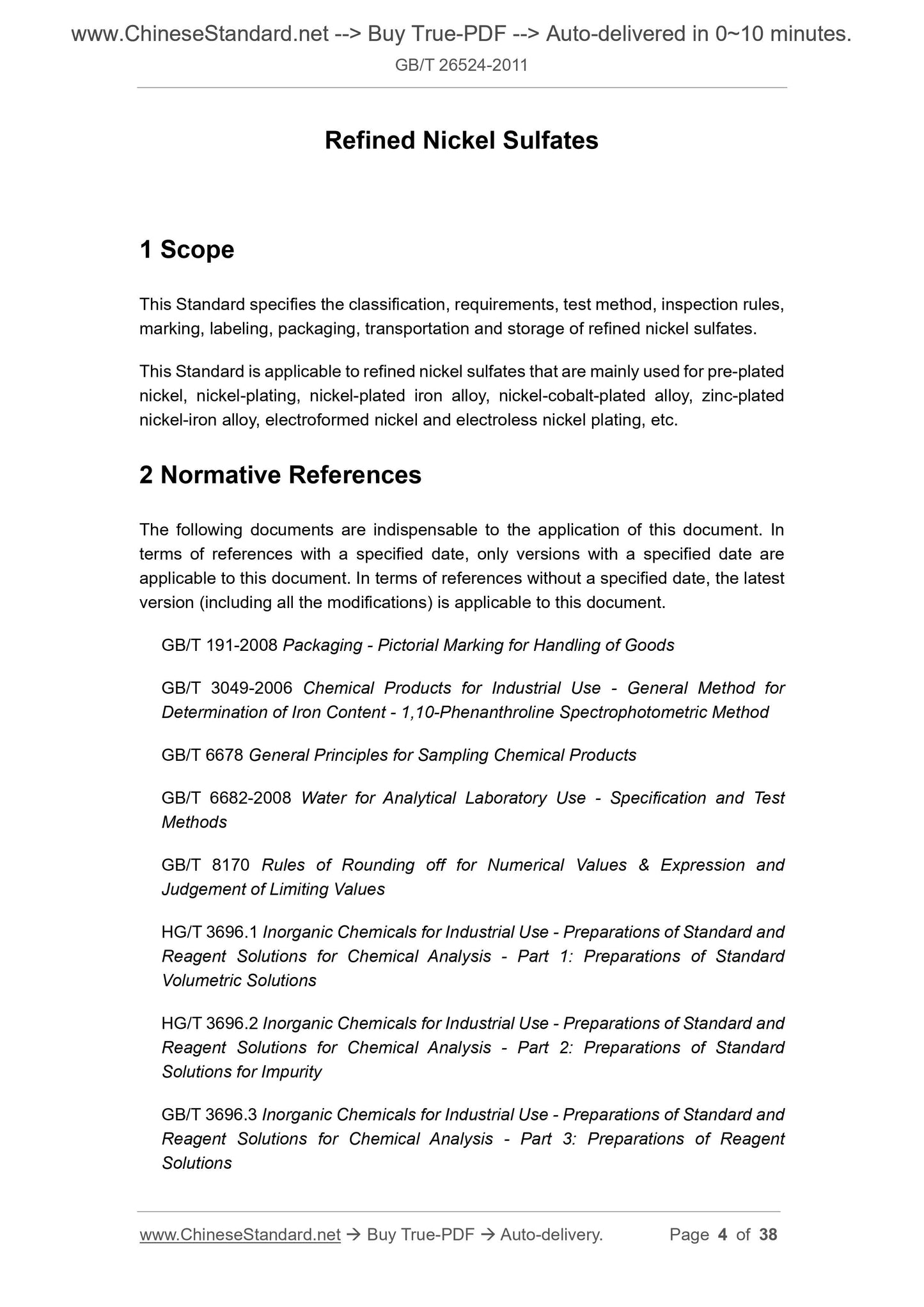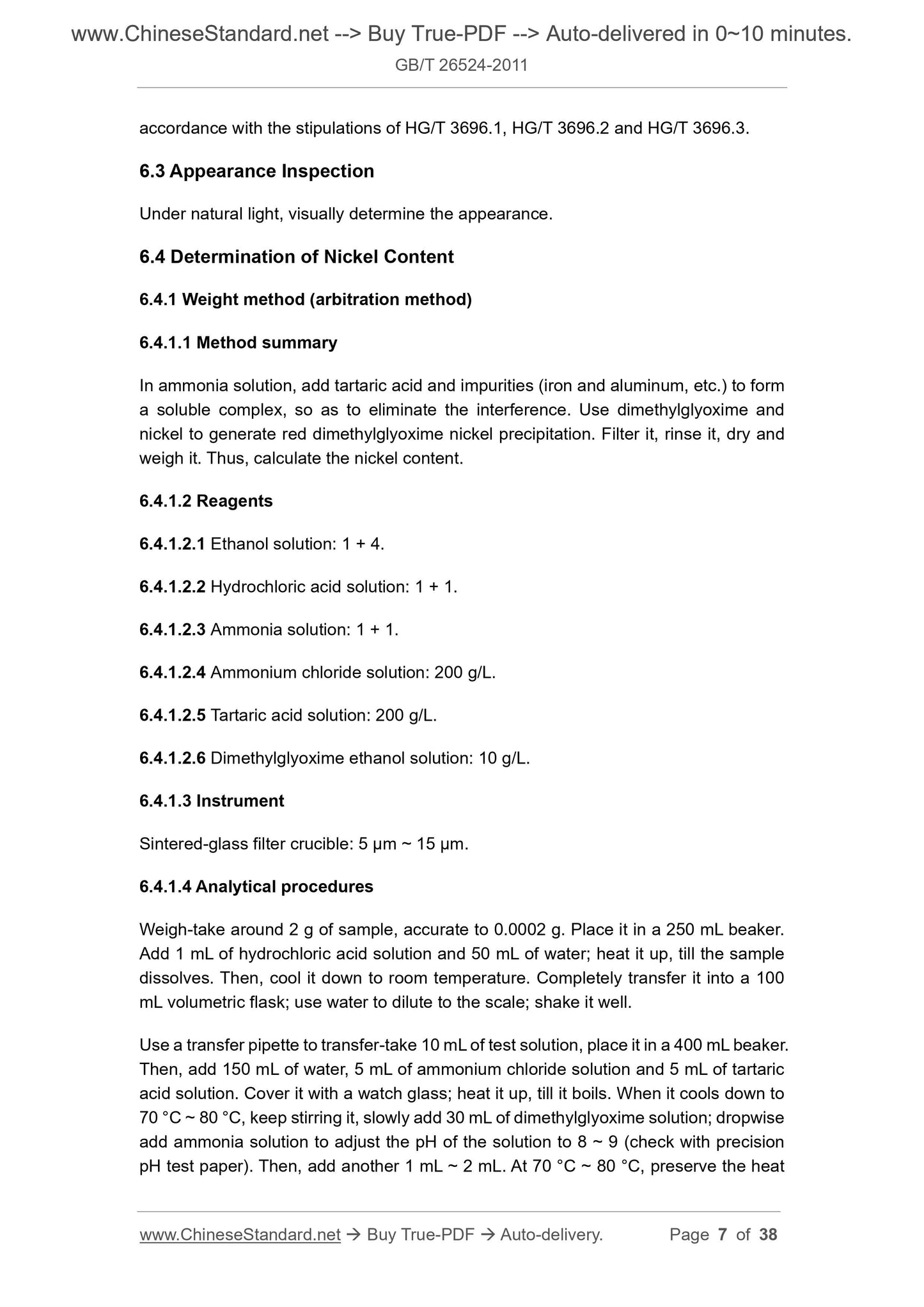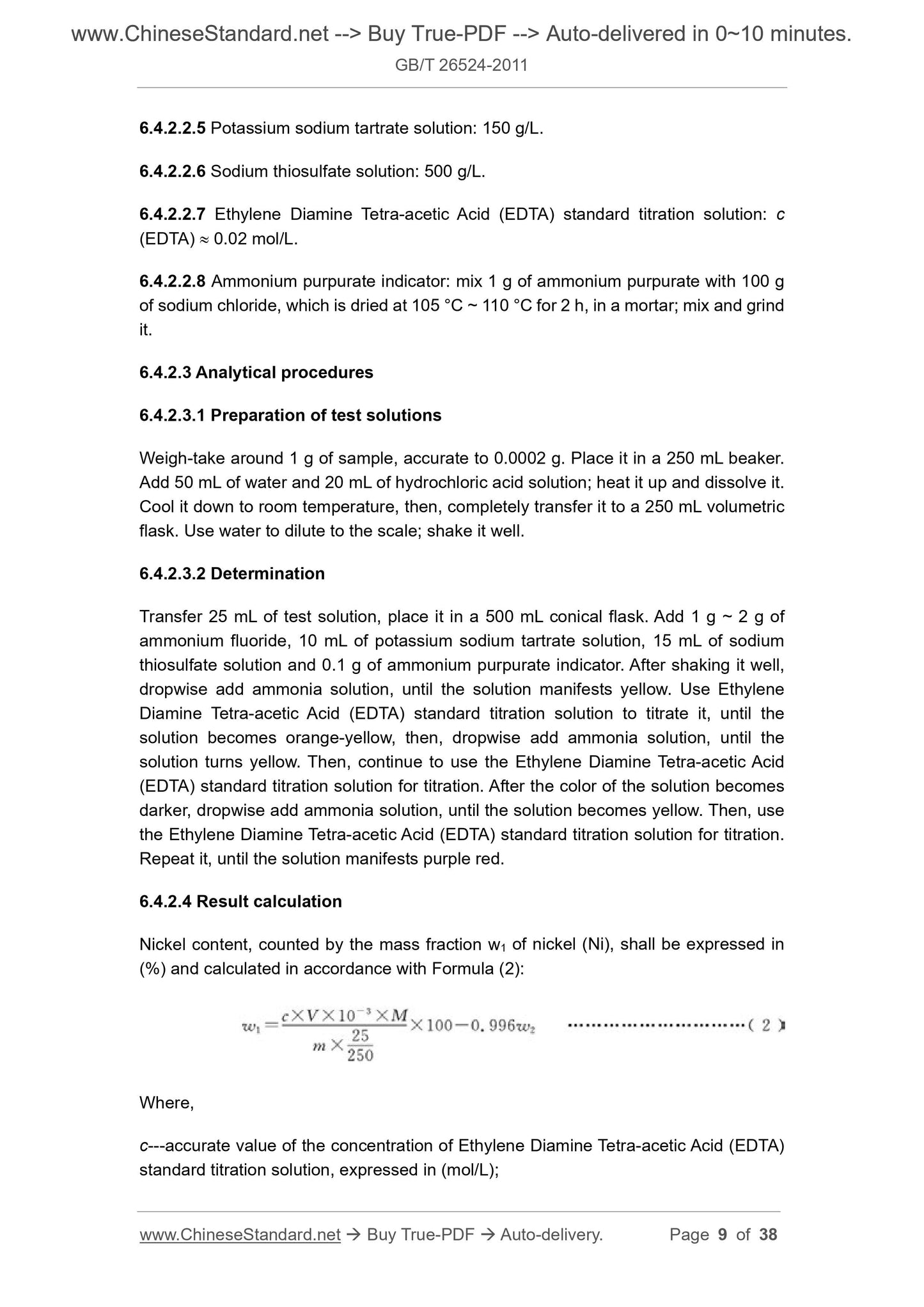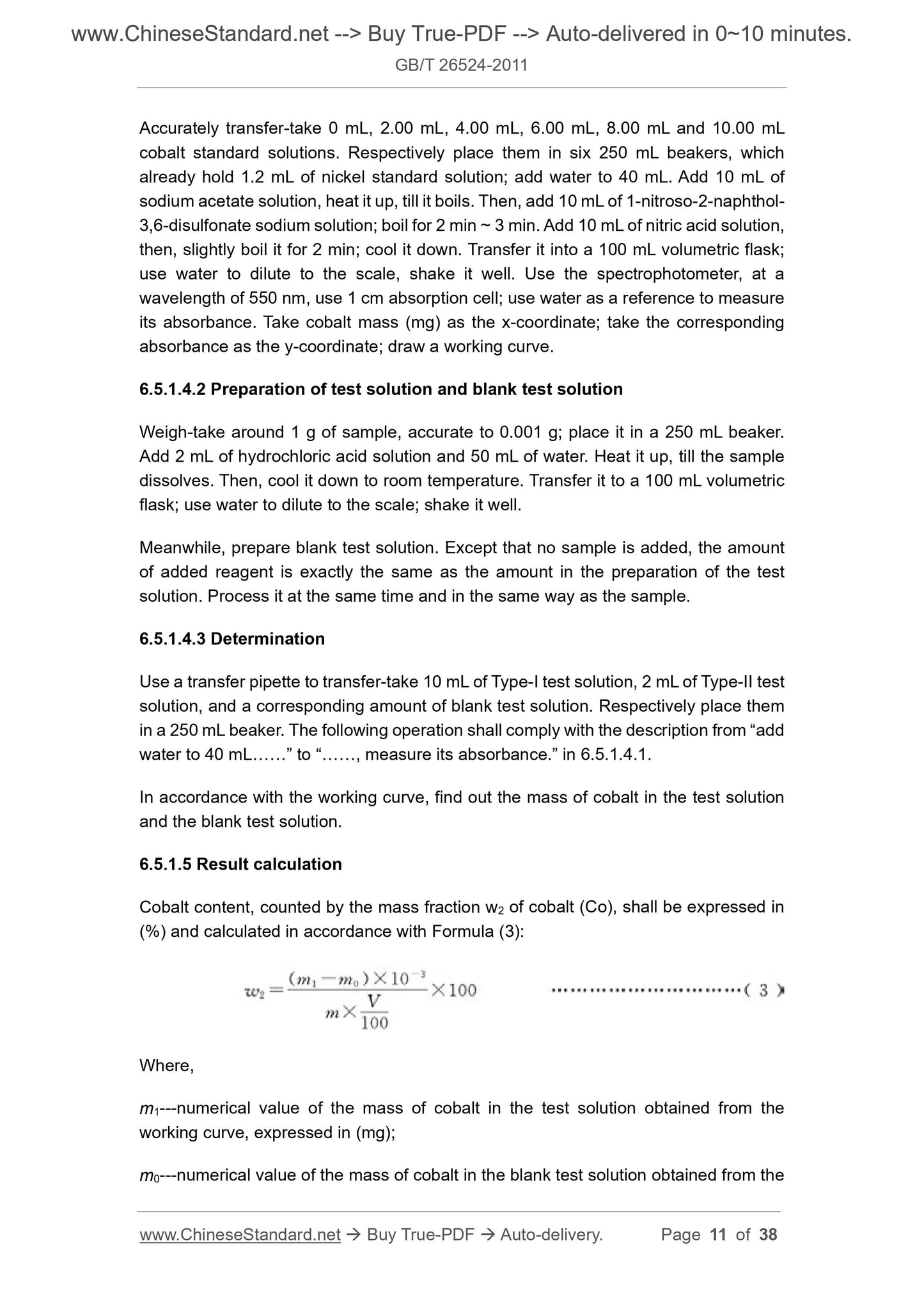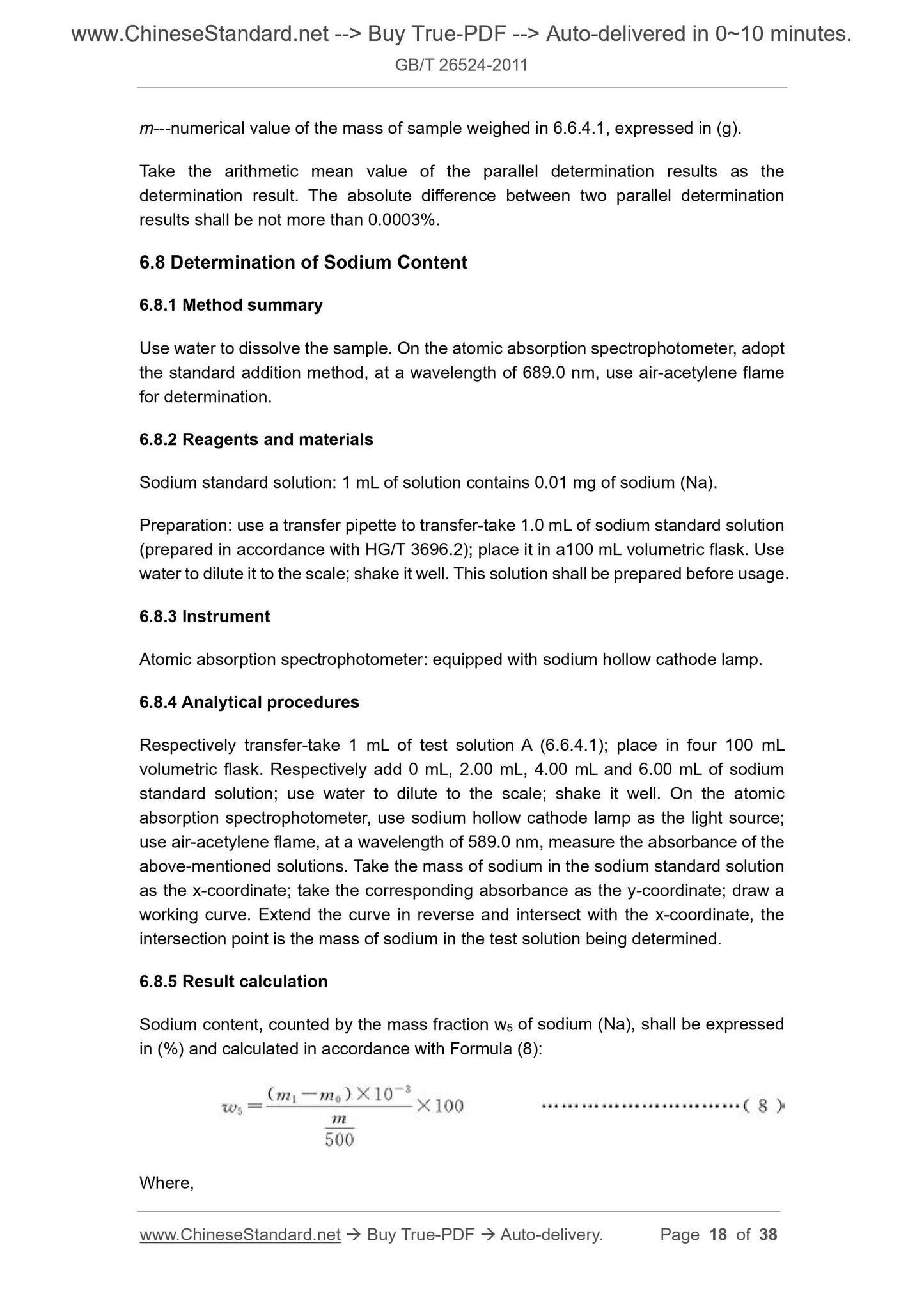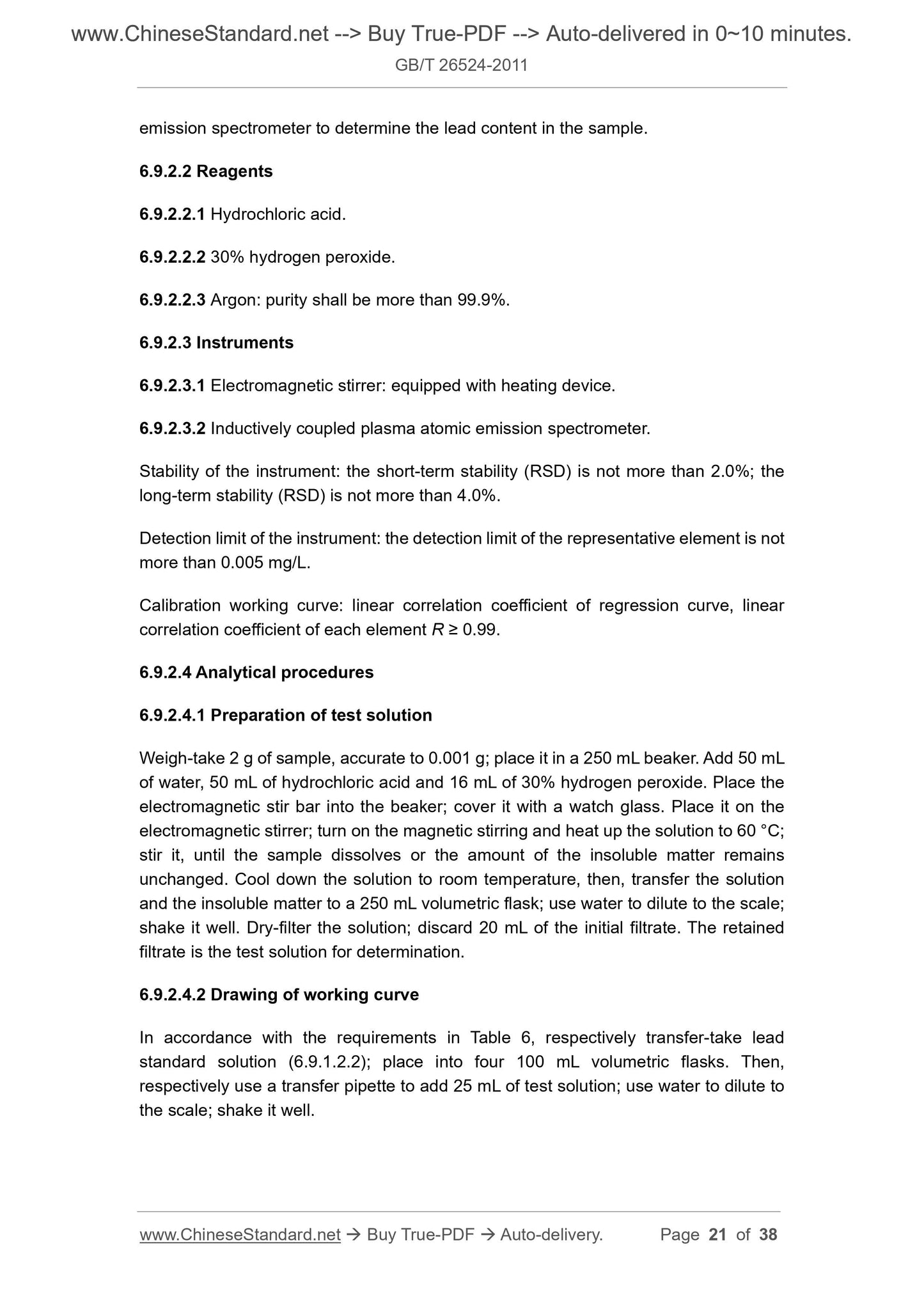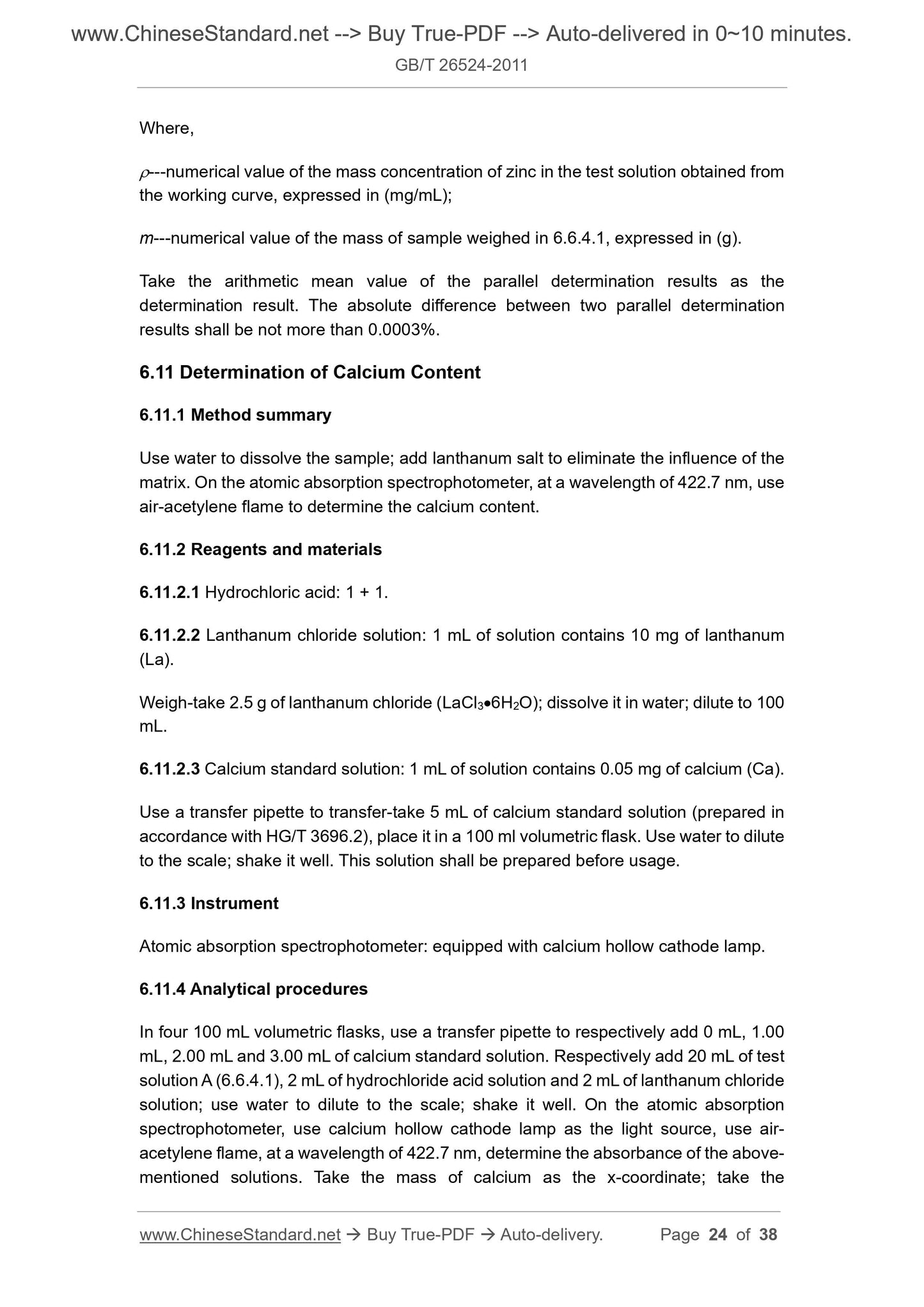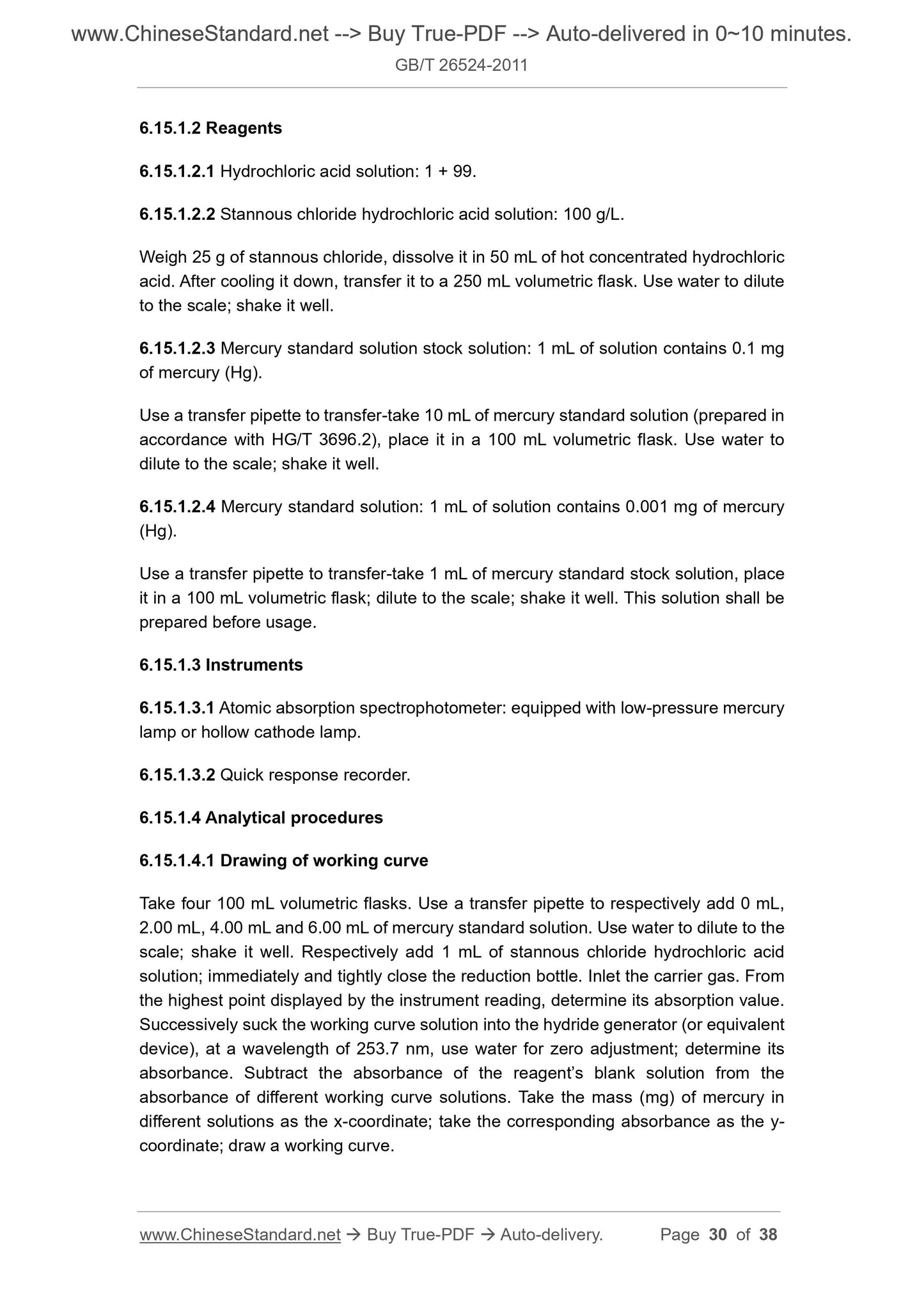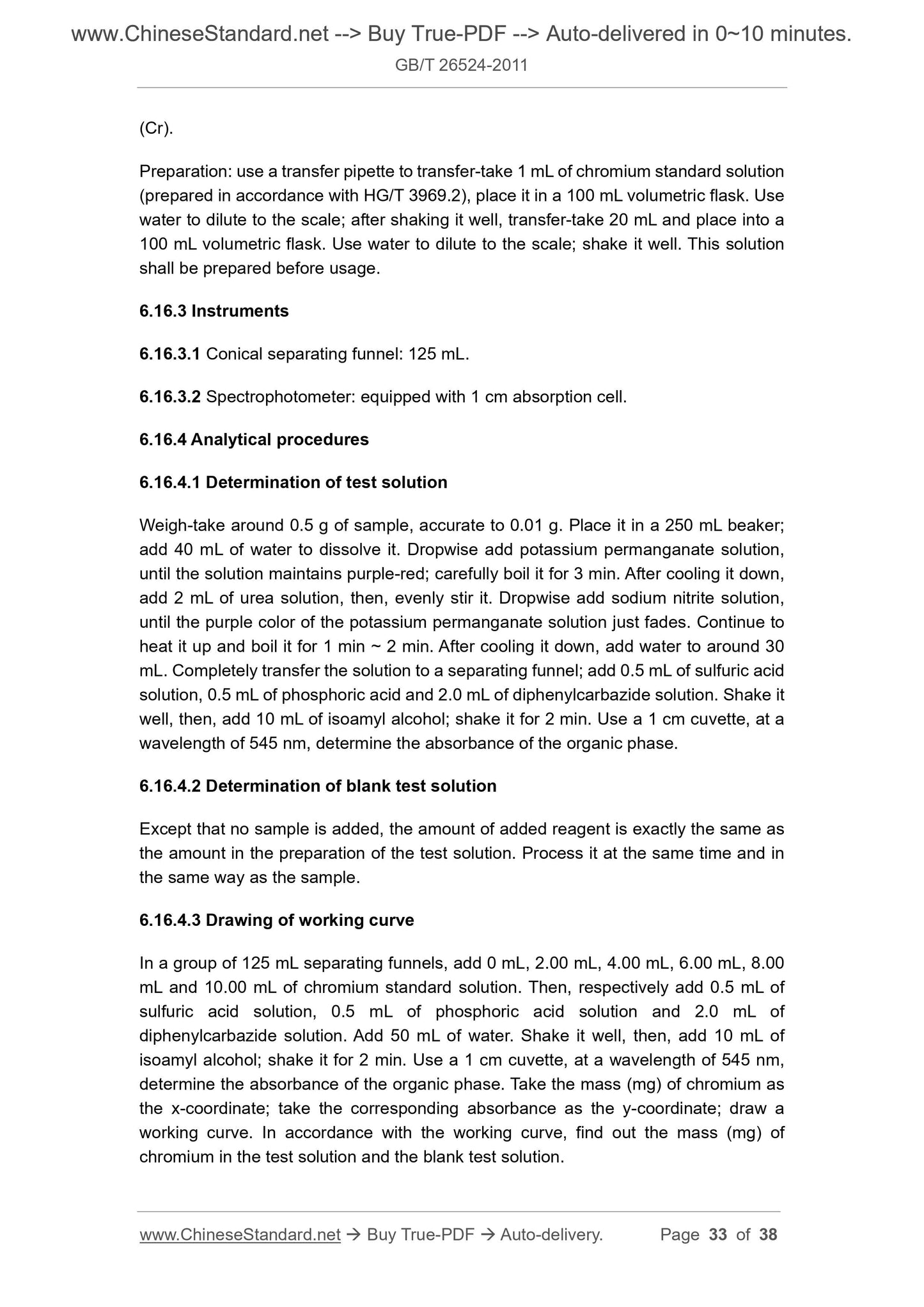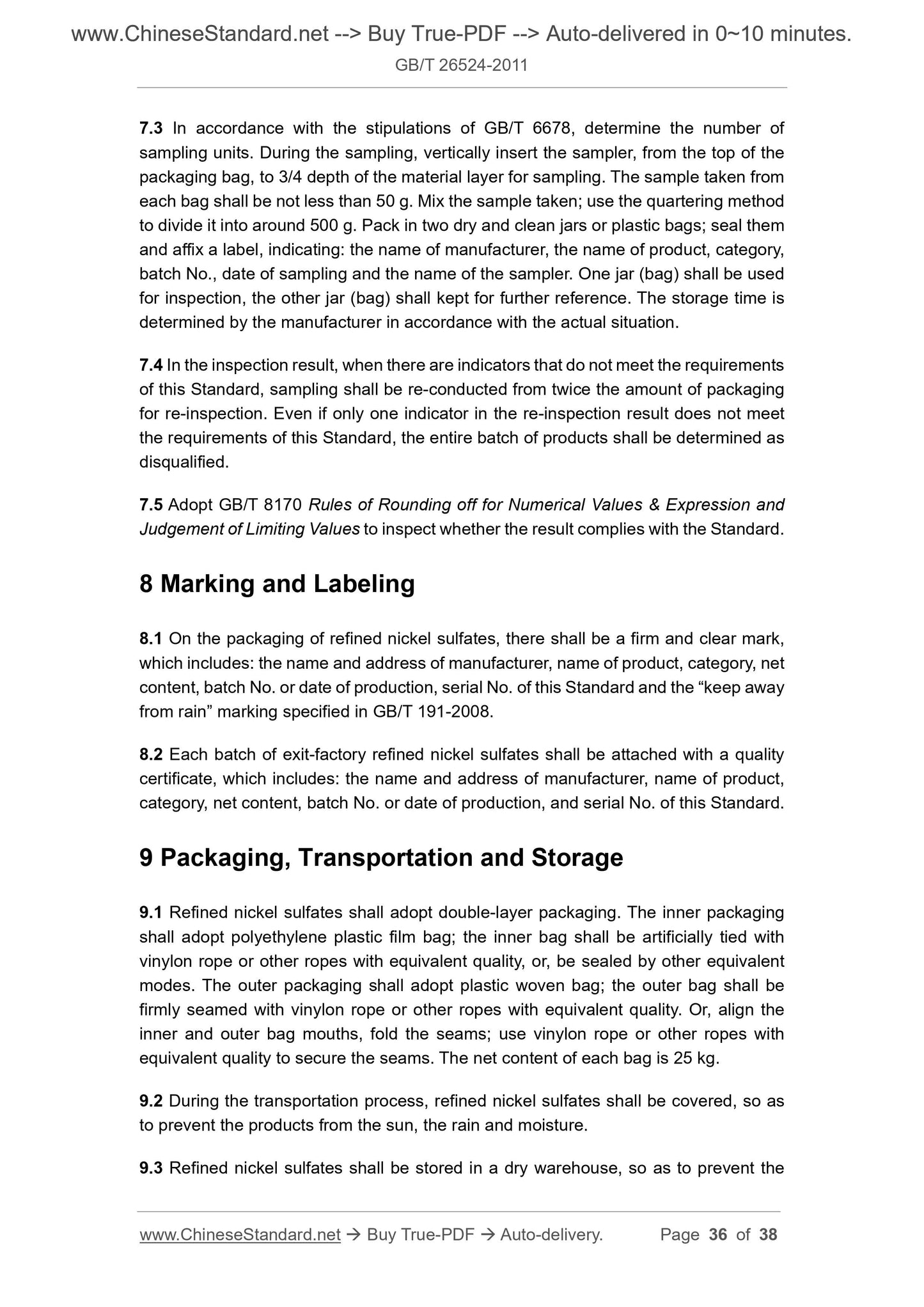1
/
of
12
www.ChineseStandard.us -- Field Test Asia Pte. Ltd.
GB/T 26524-2011 English PDF (GB/T26524-2011)
GB/T 26524-2011 English PDF (GB/T26524-2011)
Regular price
$350.00
Regular price
Sale price
$350.00
Unit price
/
per
Shipping calculated at checkout.
Couldn't load pickup availability
GB/T 26524-2011: Refined nickel sulfates
Delivery: 9 seconds. Download (and Email) true-PDF + Invoice.Get Quotation: Click GB/T 26524-2011 (Self-service in 1-minute)
Newer / historical versions: GB/T 26524-2011
Preview True-PDF
Scope
This Standard specifies the classification, requirements, test method, inspection rules,marking, labeling, packaging, transportation and storage of refined nickel sulfates.
This Standard is applicable to refined nickel sulfates that are mainly used for pre-plated
nickel, nickel-plating, nickel-plated iron alloy, nickel-cobalt-plated alloy, zinc-plated
nickel-iron alloy, electroformed nickel and electroless nickel plating, etc.
Basic Data
| Standard ID | GB/T 26524-2011 (GB/T26524-2011) |
| Description (Translated English) | Refined nickel sulfates |
| Sector / Industry | National Standard (Recommended) |
| Classification of Chinese Standard | G12 |
| Classification of International Standard | 71.060.50 |
| Word Count Estimation | 26,248 |
| Date of Issue | 2011-05-12 |
| Date of Implementation | 2011-12-01 |
| Quoted Standard | GB/T 191-2008; GB/T 3049-2006; GB/T 6678; GB/T 6682-2008; GB/T 8170; HG/T 3696.1; HG/T 3696.2; HG/T 3696.3 |
| Regulation (derived from) | Announcement of Newly Approved National Standards No. 6 of 2011 |
| Issuing agency(ies) | General Administration of Quality Supervision, Inspection and Quarantine of the People's Republic of China, Standardization Administration of the People's Republic of China |
| Summary | This standard specifies the classification of refined nickel sulfate, requirements, test methods, inspection rules, marking, labeling, packaging, transportation and storage. This standard is applicable mainly for pre-nickel, nickel, nickel alloy, nickel alloy diamond, zinc-nickel alloy, electroformed nickel and electroless nickel refined nickel sulfate. |
Share
